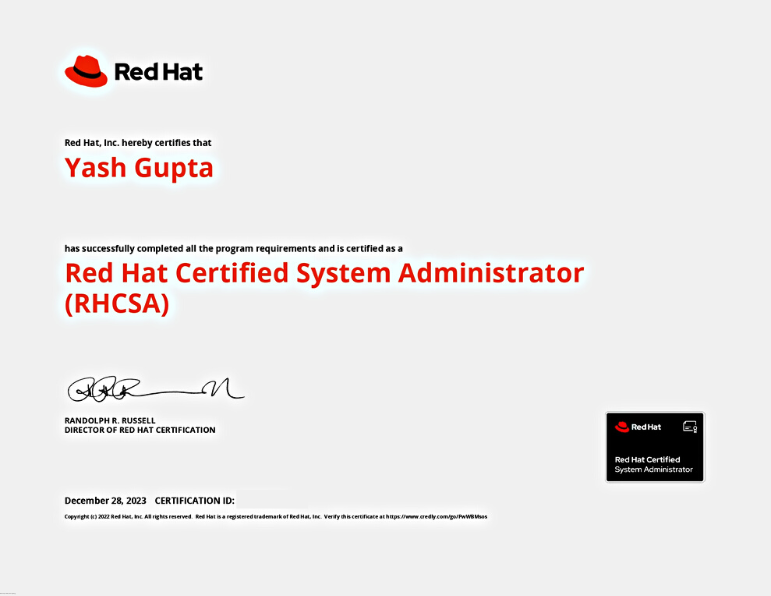Learning about RHCSA? This RHCSA Training is aimed at helping you manage Red Hat Enterprise Linux (RHEL) systems. What’s the big goal? To equip you with crucial skills and knowledge. This Red Hat Linux training is built just for you!
- Get to grips with RHEL Linux system administration: Key areas you’ll focus on include managing users, setting up file systems, and implementing security measures.
- Master command-line management of Red Hat Enterprise Linux: Allows you to perform important admin jobs accurately.
- Discover how to set up and maintain network services: Gain the ability to ensure strong and dependable connections in Linux environments.
- Prepare in-depth for the Red Hat Certified System Administrator (RHCSA) exam: Focus on practical skills that are directly applicable in the workplace.
- Get hands-on with the latest features of Red Hat Enterprise Linux 10: Become a skilled Linux system admin with comprehensive knowledge.
- Boost your skills in integrating Red Hat Enterprise Linux with other IT systems: Ensure seamless operation across diverse infrastructures.
This RHCSA course is ideal for IT beginners or professionals aiming to boost their careers with a Red Hat Linux certification or for individuals hoping to improve their Linux system management prowess. After completing this course, you’ll have the skills needed to conquer the Red Hat certification cost by acing the RHCSA exam, while also setting yourself up for tackling higher-level Redhat courses down the road.



